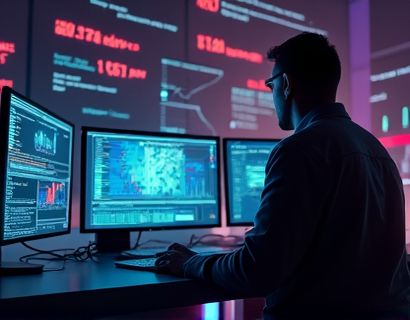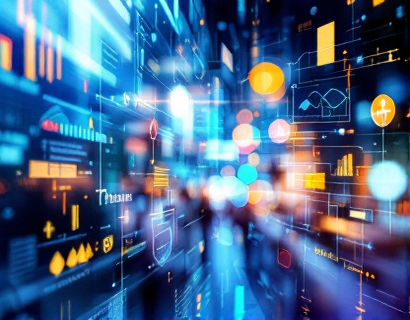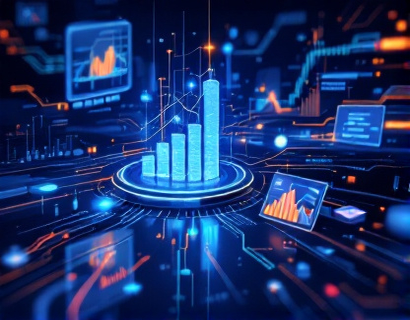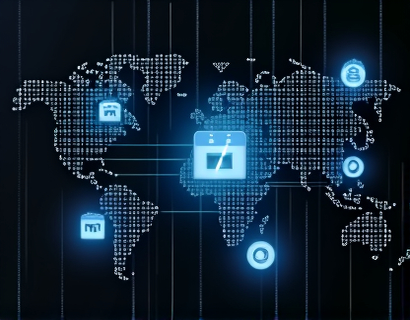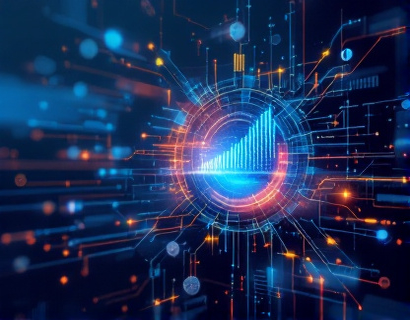Blockchain-Driven Revolution: Transforming Real-World Assets into Liquid Digital Equity for Enhanced Market Accessibility
The integration of blockchain technology into asset management is ushering in a new era of financial innovation. This transformative approach allows for the seamless tokenization of real-world assets, significantly enhancing liquidity and market accessibility. By securely embedding physical assets into the digital ecosystem, blockchain offers transparent and efficient solutions that were previously unimaginable. This revolution is not just theoretical; it is already reshaping the way individuals and businesses interact with their assets, unlocking new opportunities and streamlining transactions.
At the core of this transformation is the ability to tokenize real-world assets. Tokenization involves converting an asset into a digital token on a blockchain, which represents a fraction or the entirety of the asset. This process ensures that the asset's value is accurately reflected in the digital token, providing a new dimension of liquidity. Traditional assets such as real estate, art, and infrastructure can now be divided into smaller, tradable units, making them accessible to a broader range of investors. This democratization of asset ownership is a significant shift from the conventional model, where such assets were often locked away from the general market due to high transaction costs and complex regulatory frameworks.
The benefits of blockchain-driven asset tokenization are manifold. First and foremost, it enhances liquidity. Traditional real-world assets are illiquid, meaning they take a long time to buy or sell, and the process can be costly. Tokenization breaks down these barriers by allowing assets to be traded on digital platforms with lower transaction fees and faster settlement times. This increased liquidity attracts more investors, which in turn drives up the efficiency and depth of the markets. For instance, a piece of commercial real estate that would normally take months to sell can now be divided into digital tokens and traded almost instantaneously.
Another key advantage is the improved transparency and trust that blockchain provides. Every transaction on a blockchain is recorded on a decentralized ledger, which is immutable and accessible to all participants. This transparency reduces the risk of fraud and errors, as all parties can verify the authenticity and history of the asset. Smart contracts, self-executing contracts with the terms directly written into code, further automate and secure transactions, reducing the need for intermediaries and lowering costs. This level of trust and efficiency is particularly valuable in complex asset classes where traditional verification processes are time-consuming and expensive.
The financial sector is not the only area benefiting from this revolution. The real estate industry, for example, is seeing a paradigm shift. Traditional real estate investment trusts (REITs) have been the primary way for individuals to invest in property markets, but they come with their own set of limitations. Blockchain tokenization allows for fractional ownership of properties, enabling more people to invest in high-value real estate without the need for substantial upfront capital. This not only broadens the investor base but also increases the overall market participation, leading to more dynamic and resilient markets.
In the art market, tokenization is opening new avenues for collectors and artists alike. High-value art pieces can be tokenized, allowing for fractional ownership and easier transfer of ownership. This democratizes access to art investments, which were previously accessible only to a select few with significant capital. Moreover, the provenance and authenticity of artworks can be securely recorded on the blockchain, reducing the risk of forgeries and enhancing the overall value of the art market.
The infrastructure sector is another area where blockchain tokenization can bring significant benefits. Large infrastructure projects often require substantial capital investment and long-term planning. By tokenizing these assets, governments and private entities can attract a wider range of investors, including retail investors who can contribute smaller amounts. This not only eases the financial burden on a single entity but also spreads the risk across a larger pool of investors, making such projects more feasible and attractive.
Beyond financial and real-world applications, blockchain-driven asset tokenization is also transforming supply chain management. By tokenizing assets such as raw materials, goods, and even intellectual property, companies can achieve greater traceability and efficiency. Each step in the supply chain can be recorded on the blockchain, ensuring transparency and accountability. This reduces the risk of counterfeiting, delays, and disputes, leading to more streamlined and reliable supply chains. For example, in the pharmaceutical industry, tokenizing drug supplies can ensure that each batch is traceable from production to distribution, enhancing safety and compliance.
The environmental impact of blockchain tokenization should not be overlooked. Traditional asset management often involves paper-based processes and physical storage, which contribute to environmental degradation. Digital tokenization reduces the need for physical documents and storage, lowering the carbon footprint of asset management activities. Additionally, the increased efficiency and reduced transaction costs can lead to more sustainable business practices, as companies can allocate resources more effectively.
However, the journey towards widespread adoption of blockchain-driven asset tokenization is not without challenges. Regulatory frameworks are still evolving, and there is a need for clear guidelines to ensure compliance and protect investors. Interoperability between different blockchain platforms is another critical issue that needs to be addressed to create a seamless ecosystem. Despite these challenges, the potential benefits are compelling enough to drive continued innovation and investment in this space.
Looking ahead, the future of blockchain-driven asset tokenization is promising. As technology advances and more stakeholders recognize its value, we can expect to see broader adoption across various industries. The integration of blockchain with other emerging technologies, such as the Internet of Things (IoT) and artificial intelligence (AI), will further enhance the capabilities of asset tokenization. For instance, IoT devices can provide real-time data on the condition and usage of assets, which can be integrated with blockchain to create more dynamic and responsive asset management systems.
In conclusion, blockchain technology is revolutionizing the way real-world assets are managed and traded. By enabling the tokenization of these assets, blockchain enhances liquidity, transparency, and efficiency, opening up new opportunities for investors and businesses alike. As the ecosystem continues to evolve, the potential for innovation and growth remains vast, promising a more inclusive and dynamic global market.








